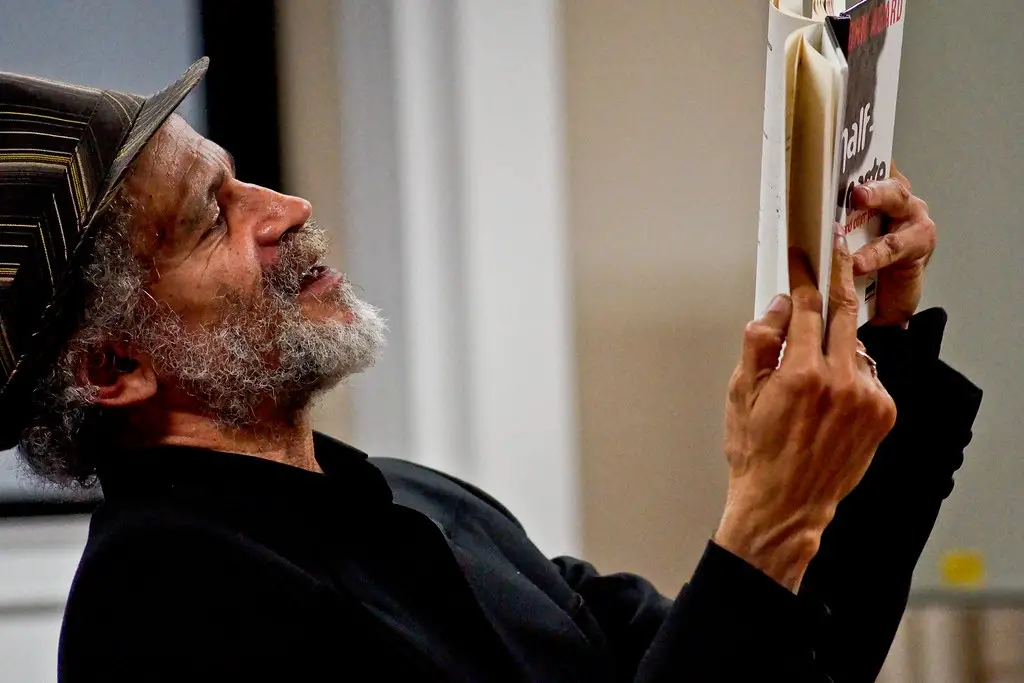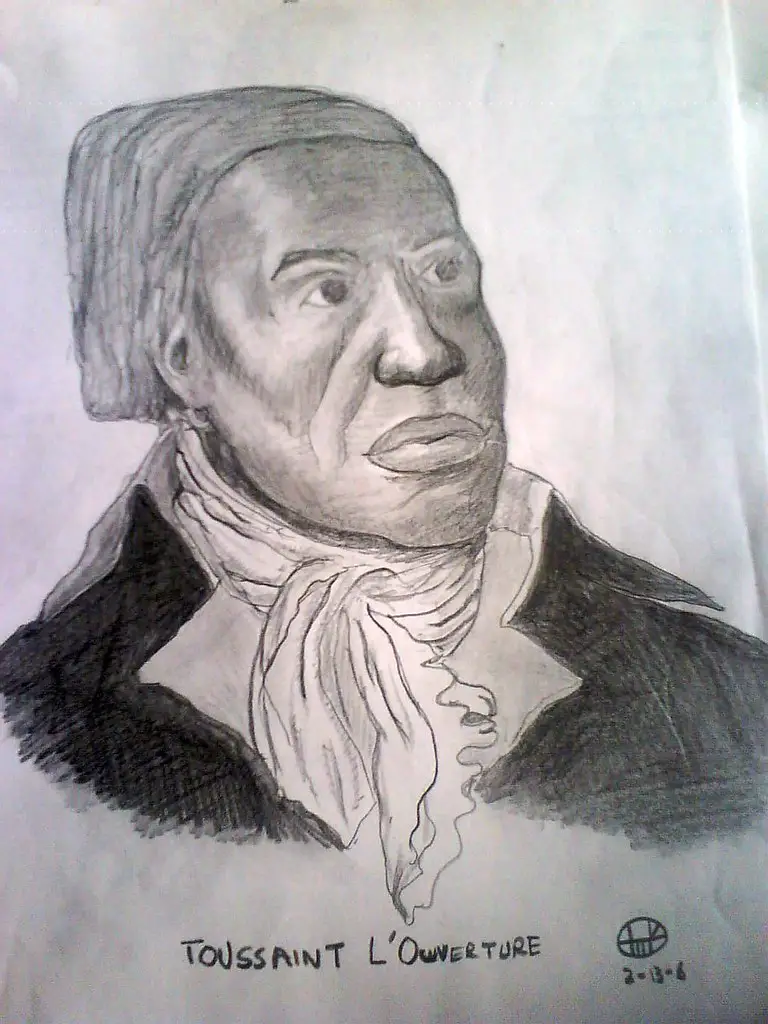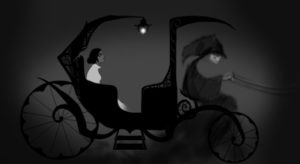
FULL POEM - SCROLL DOWN FOR LINE-BY-LINE ANALYSIS
Dem tell me
Dem tell me
Wha dem want to tell me
Bandage up me eye with me own history
Blind me to my own identity
Dem tell me bout 1066 and all dat
dem tell me bout Dick Whittington and he cat
But Touissant L’Ouverture
no dem never tell me bout dat
Toussaint
a slave
with vision
lick back
Napoleon
battalion
and first Black
Republic born
Toussaint de thorn
to de French
Toussaint de beacon
of de Haitian Revolution
Dem tell me bout de man who discover de balloon
and de cow who jump over de moon
Dem tell me bout de dish run away with de spoon
but dem never tell me bout Nanny de maroon
Nanny
see-far woman
of mountain dream
fire-woman struggle
hopeful stream
to freedom river
Dem tell me bout Lord Nelson and Waterloo
but dem never tell me bout Shaka de great Zulu
Dem tell me bout Columbus and 1492
but what happen to de Caribs and de Arawaks too
Dem tell me bout Florence Nightingale and she lamp
and how Robin Hood used to camp
Dem tell me bout ole King Cole was a merry ole soul
but dem never tell me bout Mary Seacole
From Jamaica
she travel far
to the Crimean War
she volunteer to go
and even when de British said no
she still brave the Russian snow
a healing star
among the wounded
a yellow sunrise
to the dying
Dem tell me
Dem tell me wha dem want to tell me
But now I checking out me own history
I carving out me identity

LINE-BY-LINE ANALYSIS
STANZA 1
Dem tell me
Dem tell me
Wha dem want to tell me
The context behind ‘Checking Out Me History’ is key to understanding its deeper message. The writer, John Agard, is a Guyanese poet born in Grantham, British Guiana, in 1949 where he grew up before moving to London in 1977. He, therefore, spent his formative years in Guiana as a British colony, following a British curriculum at school before the nation became independent, and subsequently known as Guyana, in 1966. Aware of this context, it becomes evident that the poem takes an auto-biographical stance, with the speaker’s narrative reflecting Agard’s own experiences to some extent. The phonetic spelling of certain words throughout the poem gives the speaker a dialect in tune with that of British Guiana’s population at the time.
Within this context, the ‘dem’ refers to the leaders of the British education system that would have dictated the curriculum that British colonial countries followed. The repetition of the poem’s opening two lines suggest an unwavering strictness to this enforcement and, correspondingly, the speaker’s frustration with it.
Bandage up me eye with me own history
Blind me to my own identity
There’s a tragic irony behind this couplet of metaphors in that the colonially driven education provided to the speaker and their peers that should be enlightening and inspiring them is having the opposite effect – ‘blinding’ them from discovering their own heritage and identity. Bandages connote injury and, in this context, symbolise the covering up of the historical colonial takeover, akin to a bandage concealing a wound.
STANZA 2
Dem tell me bout 1066 and all dat
dem tell me bout Dick Whittington and he cat
The speaker explains how the curriculum followed in British Guiana is Anglocentric, referencing the 1066 Battle of Hastings and famous English folklore ‘Dick Whittington and his Cat’ to emphasise this.
But Touissant L’Ouverture
no dem never tell me bout dat
The most prominent leader of the Haitian Revolution, ‘Toussaint L’Ouverture’ is a historical symbol that aligns much more closely to the speaker’s heritage than those of British history. Known as the “Father of Haiti” he pioneered the successful slave rebellion that resulted in the former colony’s independence in 1804. The fact that ‘dem never tell me bout dat’ hints at the colonial powers’ attempts to cover such history up, unwilling to disclose the dark past of the British Empire.
STANZA 3
Toussaint
a slave
with vision
lick back
Napoleon
battalion
and first Black
Republic born
Toussaint de thorn
to de French
Toussaint de beacon
of de Haitian Revolution
The shift to italics for this and subsequent stanzas reflect a shift in both historical content – from that taught to the speaker to that not – and tone – from resentment to enthusiasm (captured by its fast-paced, rhythmic nature). The repetition of ‘Toussaint de’ in the final four lines resembles a chant that one can imagine Toussaint’s fellow members of the slave rebellion shouting and solidifies his legendary status in the eyes of the speaker. In many ways, Toussaint is not just the ‘beacon’ of the ‘Haitian Revolution’ but a beacon of identity for the speaker – a historical figurehead with whom he could relate and be inspired by but, sadly, one that was wrongly hidden from him.
STANZA 4
Dem tell me bout de man who discover de balloon
and de cow who jump over de moon
Dem tell me bout de dish run away with de spoon
The ‘cow who jump over de moon’ and the ‘dish run away with de spoon’ form a lexical field of elementary British nursery rhymes. This emphasises how not just the speaker’s education but his upbringing as a whole was heavily Anglocentric, depriving him of his cultural heritage. The rhyme scheme throughout the poem is erratic, however, it’s consistent in this stanza which is made up of two rhyming couplets, mirroring the language of these nursery rhymes and simultaneously mocking their simplicity.
but dem never tell me bout Nanny de maroon
Despite learning about these fictional nursery rhymes that fail to intellectually stimulate the speaker, his education doesn’t incorporate anything about Nanny of the Maroons, Sarah Elizabeth Curry, a national heroine of Jamaica after her outstanding military leadership of the enslaved Windward Maroons in the 18th Century.
STANZA 5
Nanny
see-far woman
of mountain dream
The speaker’s admiration for Nanny of the Maroons is reflected in the lyrical tone of this stanza that is dedicated to her. Her visionary qualities are captured by the phrase ‘see-far woman of mountain dream’ which emphasises how she looked beyond the inhumanity of the slave towards a brighter future – finding hope in a hopeless place.
fire-woman struggle
hopeful stream
to freedom river
The imagery of nature that concludes this stanza likens Nanny of the Maroon’s greatness to that of Mother Nature, overcoming her ‘struggle’, the slave traders, with power like that of fire – her wisdom spreading through the Windward Maroons like fire through a building. The metaphors ‘hopeful stream’ and ‘freedom river’ are gentler, implying her heartfelt, empathetic leadership qualities.
STANZA 6
Dem tell me bout Lord Nelson and Waterloo
but dem never tell me bout Shaka de great Zulu
Dem tell me bout Columbus and 1492
but what happen to de Caribs and de Arawaks too
The speaker continues to draw on contrasting references that emphasise the disparity in the colonially led education system. ‘Lord Nelson’ and ‘Waterloo’ are historical symbols of the Napoleonic Wars fought between the First French Empire under Napoleon and an array of European coalitions, known as the coalition forces, between 1803 and 1815. The Battle of Waterloo is the most prominent of these in which Napolean was decisively defeated by the coalition forces in what was the United Kingdom of the Netherlands, now Belgium. Regarded as one of the greatest naval commanders in history, Lord Nelson is most remembered for his heroic death in the Battle of Trafalgar in 1805 whilst pioneering victory for the British Royal Navy against the French and Spanish allied Navies that vastly outnumbered them. ‘Lord Nelson and Waterloo’ are hence icons of British history and, resultingly, colonial supremacy, motivating their strategic inclusion in their curriculum.
STANZA 7
Dem tell me bout Florence Nightingale and she lamp
and how Robin Hood used to camp
Dem tell me bout ole King Cole was a merry ole soul
but dem never tell me bout Mary Seacole
Notably, this stanza compares the posthumous recognition received by Florence Nightingale and Mary Seacole who both provided medical care to British soldiers in the Crimean War and, resultingly, forged great advancements in the nursing profession. Both undoubtedly carried out pioneering work caring for the injured during the war, Seacole setting up a boarding house for Soldiers, whilst Nightingale became known as ‘The Lady with the Lamp’ for her work in military hospitals where patients described her as ‘a ministering angel’. Having been an icon in the media throughout its duration, Nightingale is reported to have left the Crimean War wealthy and influential – the establishment of the Nightingale Fund helped her pioneer the professionalisation of nursing roles in Britain. Seacole, however, was not so fortunate and failed to make the same impact after the war, resultingly not receiving the subsequent recognition she deserved. Racial inequality at the time is reported to have been the underlying cause of this and is a further reason why the speaker references the two nurses – highlighting the racism inherent to the colonial curriculum, potentially intentional, perhaps a byproduct of its British focus.
STANZA 8
From Jamaica
she travel far
to the Crimean War
she volunteer to go
and even when de British said no
she still brave the Russian snow
a healing star
among the wounded
a yellow sunrise
to the dying
As touched on in the previous stanza’s analysis, the speaker elaborates on Mary Seacole’s historical significance, in a way that further questions her dismissal from the curriculum. In a similar vein to the imagery of nature used to portray Nanny of the Maroon’s strength, the metaphors describing Mary Seacole as ‘a healing star’ and ‘a yellow sunrise’ signify how she was a beacon of hope to the soldiers she treated during the Crimean War. The fact ‘de British said no’ to Seacole trying to offer them assistance demonstrates the racial barriers she had to overcome, which the poem implies remain prevalent.
STANZA 9
Dem tell me
Dem tell me wha dem want to tell me
This couplet is a refrain, echoing the opening lines of the first stanza, emphasising how the speaker and his peers are unable to challenge the regimented colonial education system.
But now I checking out me own history
I carving out me identity
Despite the two lines prior, the poem concludes with this defiant, rebellious final couplet, with the speaker vowing to rise above the regime and carve out his own identity. Ending on this note gives the poem an inspirational final message, motivating the reader to strive to do what’s right even in the face of adversity.


